Colorful Celebrations: The Vibrant Festivals of Bulacan, Philippines
Experience the rich cultural heritage and lively traditions through Bulacan's most spectacular festivals
Table of Contents
Introduction to Bulacan Festivals
Bulacan, a province located in the Central Luzon region of the Philippines, is not just known for its historical significance as the cradle of the First Philippine Republic but also for its vibrant cultural festivals that showcase the rich heritage, traditions, and artistic talents of the Bulakeños.
These festivals, celebrated throughout the year, offer visitors a unique opportunity to experience the province's cultural identity, religious devotion, agricultural bounty, and artistic expressions. From colorful street dances and elaborate parades to religious processions and culinary showcases, Bulacan's festivals are a feast for the senses.
Why Bulacan Festivals Are Special
- They represent a blend of pre-colonial traditions and Spanish Catholic influences
- Many festivals celebrate the province's agricultural identity and bountiful harvests
- They showcase unique local crafts, such as the intricate bamboo arches (singkaban) and decorative paper cutting for pastillas wrappers
- The festivals honor patron saints while maintaining cultural practices that date back centuries
- They provide economic opportunities for local artisans, food vendors, and the tourism industry
The festivals of Bulacan are not just celebrations but living museums that preserve cultural practices, strengthen community bonds, and pass traditions to younger generations. Through these colorful celebrations, visitors can gain insights into the soul of Bulacan and the Filipino spirit.
"The festivals of Bulacan are windows into the Filipino soul, where faith, history, artistry, and community spirit intertwine to create celebrations that are as meaningful as they are joyful."
In this comprehensive guide, we'll take you through the most significant festivals of Bulacan, providing details about their origins, highlights, schedules, and practical information for visitors. Whether you're a cultural enthusiast, a photography buff, or simply a curious traveler, Bulacan's festivals offer unforgettable experiences that will enrich your understanding of Philippine culture.
Festival Calendar at a Glance
| Month | Festival | Location | Highlights |
|---|---|---|---|
| January |
Halamanan Festival Santo Niño de Malolos Festival |
Guiguinto Malolos City |
Flower displays, garden exhibits Procession of Santo Niño images |
| January | Minasa Festival | Bustos | Cookie-making competitions, cultural shows |
| May |
Obando Fertility Dance Festival Kneeling Carabao Festival |
Obando Pulilan |
Fertility dance processions Decorated carabaos kneeling in front of church |
| May | Pastillas Festival | San Miguel | Pastillas-making, paper-cutting exhibitions |
| June | Libad Festival | Calumpit | Fluvial procession, decorated boats |
| September | Singkaban Festival | Provincial-wide (Malolos City) |
Street dancing, bamboo arch displays, cultural shows |
*Festival dates may vary slightly each year. It's advisable to check official announcements before planning your visit.

Singkaban Festival
About the Festival
The Singkaban Festival, also known as "Sining at Kalinangan ng Bulacan" (Art and Culture of Bulacan), is the province's grandest cultural celebration. Held every September, this week-long festival coincides with the anniversary of the Malolos Republic and showcases the rich artistic heritage of Bulacan.
Festival Highlights
- Colorful street dancing competitions
- Vibrant parades showcasing municipal floats
- Traditional folk dances and music performances
- Art exhibitions featuring local artists
- Cultural shows and historical reenactments
- Food fairs featuring Bulacan's culinary specialties
- Trade fairs and exhibits of local products
Cultural Significance
The festival's name comes from "singkaban," the intricate bamboo arches decorated with colorful paper that are traditionally used during fiestas. These arches symbolize the artistry and craftsmanship of the Bulakeños.
Singkaban Festival celebrates not only Bulacan's artistic traditions but also commemorates its significant role in Philippine history, particularly during the revolutionary period and the establishment of the First Philippine Republic.


Visitor Tips
- The main parade usually takes place on September 15, so plan your visit accordingly.
- Bring a camera to capture the colorful costumes and performances.
- Check the festival schedule at the Bulacan Provincial Capitol or tourism office for specific events.
- Wear comfortable clothing and footwear as you'll likely be walking or standing for extended periods.
- Book accommodations in advance as hotels fill up quickly during the festival.
"The Singkaban Festival is not just a celebration of Bulacan's artistic heritage but also a commemoration of its pivotal role in Philippine history and independence."Official Festival Information
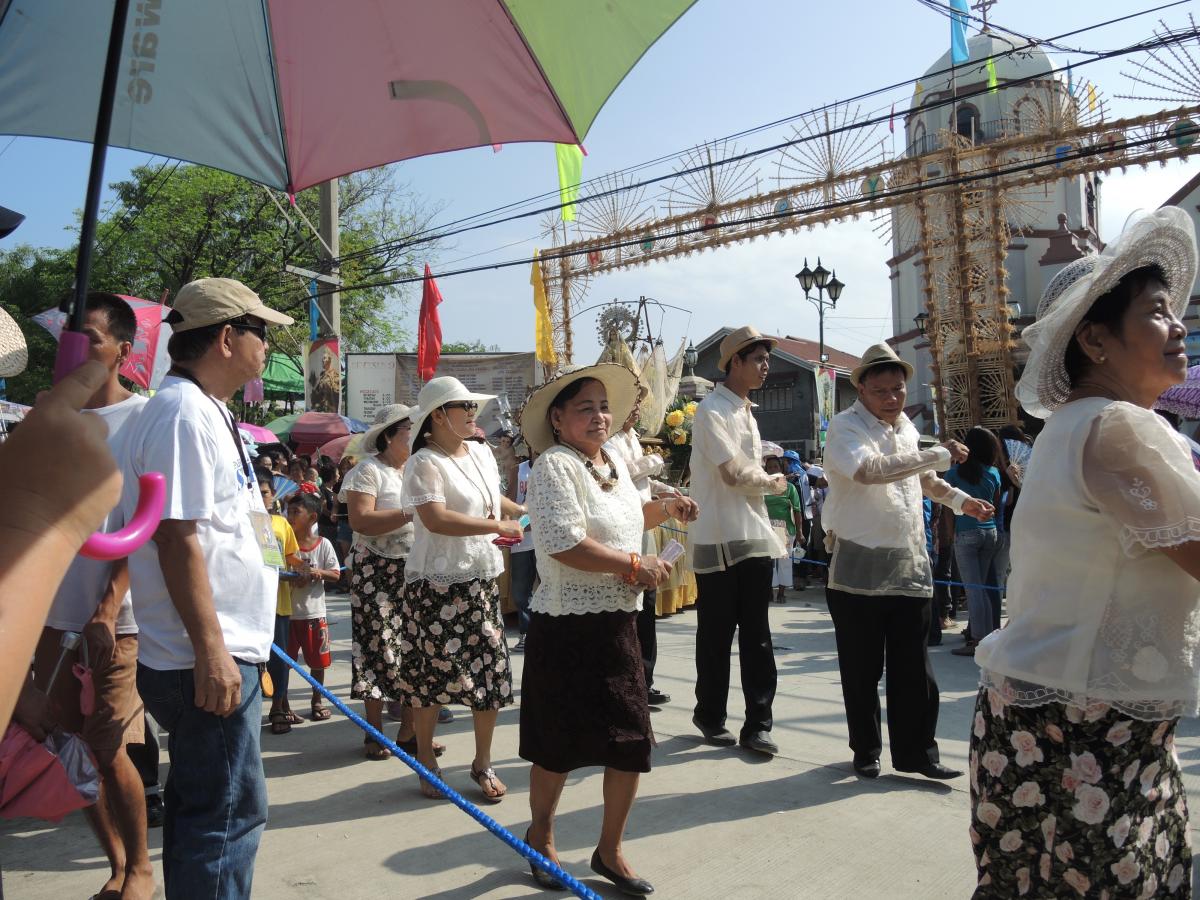
Obando Fertility Dance Festival
About the Festival
The Obando Fertility Rites, locally known as "Kasilonawan Festival," is one of the most unique and ancient festivals in the Philippines. This three-day celebration combines indigenous fertility rituals with Catholic traditions, creating a fascinating cultural spectacle that draws visitors from across the country and abroad.
Festival Highlights
- Ritual dancing processions through the streets
- Daily masses honoring the three patron saints
- Traditional "Pandanggo sa Ilaw" and "Santa Clara" dances
- Couples and individuals dancing for fertility blessings
- Colorful traditional costumes and decorations
- Local food festivals and cultural presentations
- Fluvial processions along Obando River
Cultural Significance
Each of the three days is dedicated to a different patron saint:
- May 17: San Pascual Baylon (for finding a good husband/wife)
- May 18: Santa Clara (for women seeking to conceive)
- May 19: Nuestra Señora de Salambao (for general blessings)
The festival's origins date back to pre-colonial times, with indigenous fertility rituals later incorporated into Catholic celebrations during the Spanish colonial period.
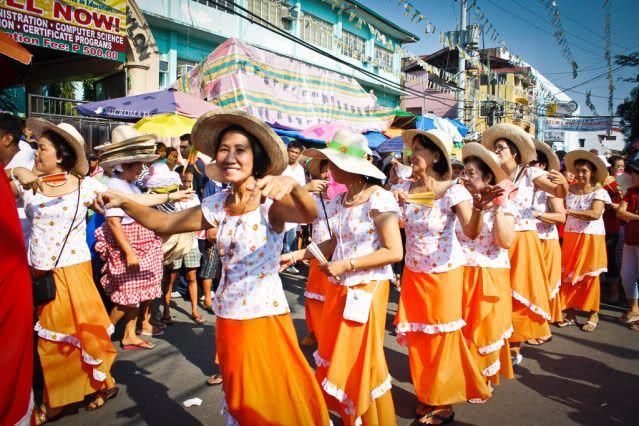

Visitor Tips
- The dance processions usually begin after the morning mass at San Pascual Baylon Church.
- Visitors are welcome to join in the dancing – no special skills required!
- Wear comfortable clothing and bring sun protection as most activities take place outdoors.
- Be respectful of the religious aspects of the festival, as it remains an important spiritual event for many participants.
- Consider staying in Manila and making a day trip, as accommodations in Obando are limited.
"The Obando Fertility Rites represent a beautiful fusion of indigenous Filipino beliefs and Catholic traditions, demonstrating how cultures can blend while preserving their unique identities."Learn More About the Obando Fertility Rites
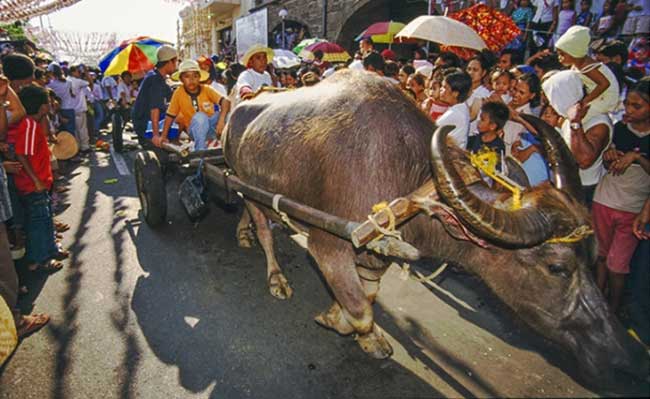
Kneeling Carabao Festival
About the Festival
The Kneeling Carabao Festival (Carabao Festival) is one of the most distinctive celebrations in the Philippines. Held in honor of San Isidro Labrador, the patron saint of farmers, this festival features the remarkable sight of carabaos (water buffalos) kneeling in front of the church as a sign of reverence.
Festival Highlights
- Parade of decorated carabaos through town
- Carabaos kneeling in front of San Isidro Church
- Colorful carabao-drawn carts displaying farm produce
- Agricultural exhibits and trade fairs
- Street dancing competitions
- Traditional games and cultural performances
- Religious processions and masses
Cultural Significance
The carabao, or water buffalo, has been an indispensable partner of Filipino farmers for centuries. This festival honors both the patron saint of farmers and the hardworking carabao that has helped cultivate the land.
The sight of these massive animals kneeling in front of the church symbolizes humility, gratitude, and devotion – values deeply embedded in Filipino agricultural communities.
The festival also celebrates Pulilan's agricultural heritage and the bountiful harvests that have sustained the community through generations.

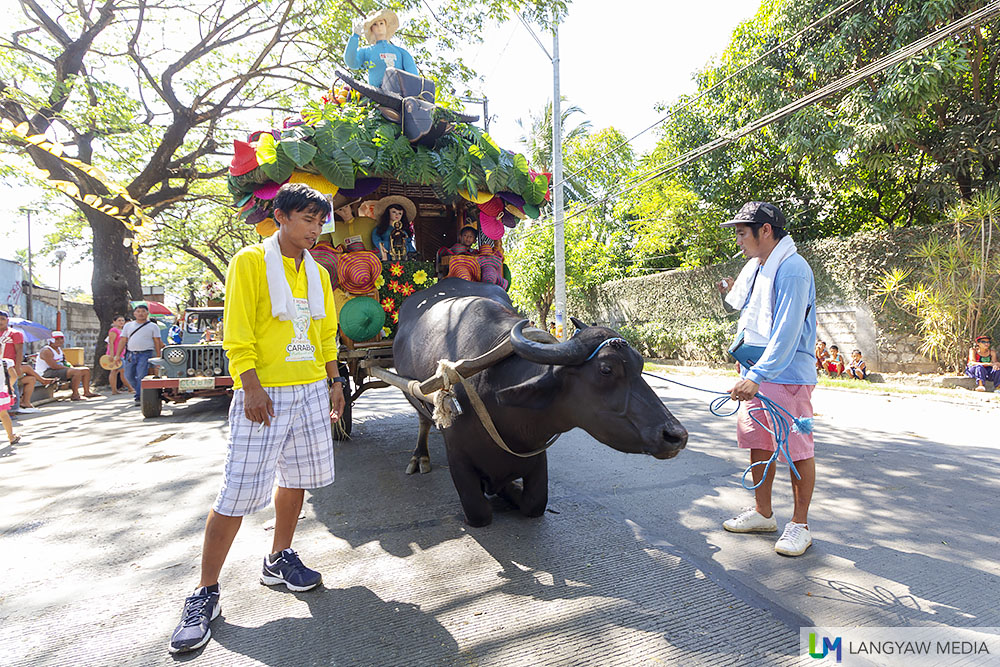
Visitor Tips
- The main parade with decorated carabaos usually begins at 2 PM on May 14.
- Position yourself near the San Isidro Labrador Church to witness the carabaos kneeling.
- Bring sun protection and water as most activities take place outdoors.
- Visit the agricultural fair to sample local produce and delicacies.
- Arrive early to secure a good viewing spot, as this festival attracts many visitors.
"The sight of these powerful beasts kneeling in humility before the church creates an unforgettable image that embodies the Filipino farmer's devotion, gratitude, and respect for both divine and natural forces."Official Festival Information

Halamanan Festival
About the Festival
The Halamanan Festival celebrates Guiguinto's thriving garden and landscaping industry. The name "Halamanan" literally means "garden" in Filipino, reflecting the municipality's reputation as the garden capital of Bulacan. This colorful festival combines horticultural displays with cultural performances, creating a feast for the senses.
Festival Highlights
- Spectacular floral and garden displays
- Parade of floats decorated with flowers and plants
- Garden design competitions
- Plant and flower markets
- Landscape exhibitions
- Street dancing competitions
- Cultural shows and performances
- Plant seminars and workshops
Cultural Significance
The festival was established in 1998 to recognize and promote Guiguinto's garden industry, which has become a significant source of livelihood for many locals. The celebration coincides with the feast day of St. Ildefonso, the town's patron saint.
Halamanan Festival not only showcases the town's horticultural expertise but also celebrates the harmonious relationship between the people and their natural environment. It highlights how the community has transformed their agricultural skills into a thriving industry.
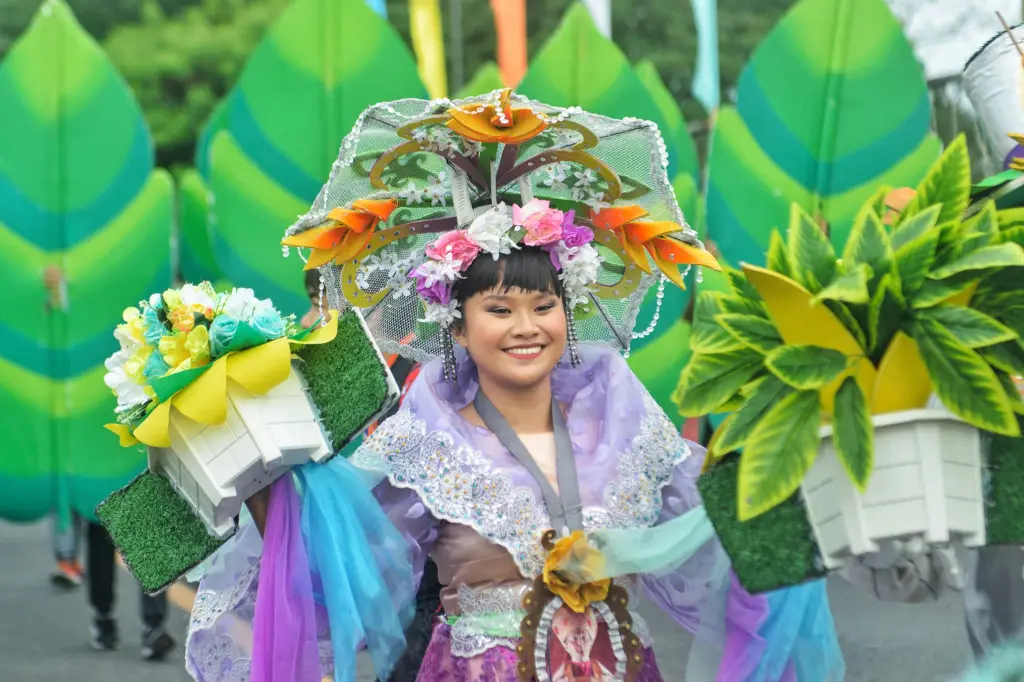
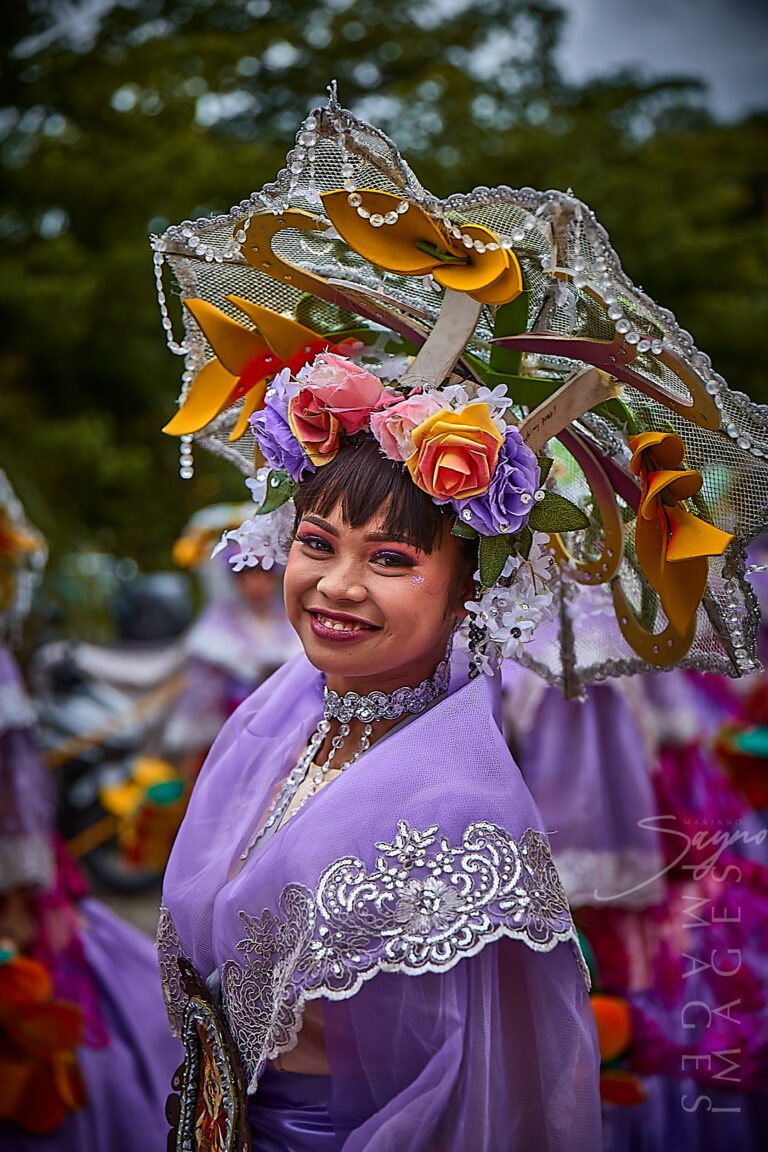
Visitor Tips
- The grand parade usually takes place on January 23, but garden displays are available throughout the festival week.
- Visit the plant market to purchase unique varieties of plants and flowers at reasonable prices.
- Bring a camera to capture the beautiful floral displays and garden arrangements.
- Attend the landscape design workshops for gardening tips from local experts.
- Consider visiting local garden centers and nurseries to see more of Guiguinto's horticultural industry.
"The Halamanan Festival transforms Guiguinto into a vibrant tapestry of colors and fragrances, showcasing how the people have cultivated not just plants but a thriving culture rooted in their natural environment."Festival Facebook Page
Minasa Festival
The Minasa Festival celebrates Bustos' famous delicacy, the "minasa" cookie. This week-long event showcases the municipality's culinary heritage and features various activities like cookie-making competitions, cultural performances, and trade fairs.
Festival Highlights
- Cookie-making demonstrations and competitions
- Food fairs featuring local delicacies
- Cultural performances and street dancing
- Trade exhibitions and bazaars
- Off-road challenge events
Visitor Tips
Don't miss the opportunity to taste and purchase authentic minasa cookies from local bakers. The festival is also a great time to explore Bustos Dam and other local attractions.
Libad Festival
The Libad Festival is a colorful fluvial procession held in honor of St. John the Baptist. This celebration features beautifully decorated pagodas (boats) that parade along the Calumpit River, creating a vibrant spectacle on water.
Festival Highlights
- Fluvial procession with over 100 decorated boats
- Religious ceremonies honoring St. John the Baptist
- Cultural performances and street dancing
- Water-based games and activities
- Local food fairs and product exhibitions
Visitor Tips
Position yourself along the riverbanks for the best view of the fluvial parade. Consider joining one of the boat rides offered to tourists for a more immersive experience. Don't forget to bring sun protection and water.
Santo Niño de Malolos Festival
The Santo Niño de Malolos Festival is one of the largest expressions of devotion to the Holy Child Jesus in Luzon. This vibrant celebration features a grand procession of hundreds of Santo Niño images, from antique heirlooms to modern interpretations.
Festival Highlights
- Exhibition of Santo Niño images and collections
- Grand procession through the streets of Malolos
- Special masses and religious ceremonies
- Cultural performances and dance presentations
- Food fairs featuring local delicacies
Visitor Tips
Visit the exhibition hall to see the diverse collection of Santo Niño figures. The procession usually begins in the late afternoon, so arrive early to secure a good viewing spot. Respect the religious nature of the celebration.
Pastillas Festival
The Pastillas Festival celebrates San Miguel's famous milk candy delicacy and the intricate art of "pabalat" or decorative paper cutting used to wrap these sweets. First celebrated in 2006, this festival highlights a unique cultural tradition that has been passed down through generations.
Festival Highlights
- Pastillas-making demonstrations and competitions
- Pabalat (paper cutting) exhibitions and workshops
- Cultural shows and street performances
- Food fairs featuring local delicacies
- Artisanal craft markets and exhibitions
Visitor Tips
Don't miss the pabalat-making demonstrations to see this intricate folk art in action. Purchase freshly made pastillas as souvenirs, and consider participating in a workshop to learn the basics of paper cutting.
Travel Information
How to Get to Bulacan
From Manila
-
By Bus: Several bus lines operate from Manila to various towns in Bulacan. Major terminals include:
- Baliwag Transit (Cubao and Sampaloc terminals)
- Five Star Bus Company (Cubao and Pasay terminals)
- German Espiritu Transit (Monumento terminal)
- By Private Vehicle: Take the North Luzon Expressway (NLEX) from Manila. Travel time is approximately 1-1.5 hours depending on traffic and your specific destination in Bulacan.
- By Taxi or Ride-Sharing: Services like Grab are available for direct travel to Bulacan from Manila, though this is a more expensive option.
From Clark International Airport
- By Bus: Take a bus from Clark to Manila, then transfer to a Bulacan-bound bus.
- By Private Vehicle: Rent a car at the airport and take NLEX southbound toward Bulacan.
Getting Around Bulacan
- Jeepneys: The most common public transportation within towns and between neighboring municipalities.
- Tricycles: Available for short-distance travel within towns and to reach places not serviced by jeepneys.
- UV Express Vans: Operate between major towns in Bulacan and to/from Manila.
- Rental Vehicles: Consider renting a car or van for more flexible exploration, especially if visiting multiple festival sites.
Best Time to Visit
Bulacan's festivals are spread throughout the year, so the best time to visit depends on which celebrations you want to experience:
- January: Halamanan Festival, Minasa Festival, Santo Niño de Malolos Festival
- May: Obando Fertility Dance Festival, Kneeling Carabao Festival, Pastillas Festival
- June: Libad Festival
- September: Singkaban Festival
The dry season (November to May) generally offers more comfortable weather for festival attendance, though some events are specifically scheduled during other months.
Tourism Contacts
Provincial Tourism Office
+63 (44) 791-8128/8129
pgso@bulacan.gov.ph
Provincial Capitol Compound, Malolos City, Bulacan
Where to Stay
When visiting Bulacan for its festivals, you'll find various accommodation options ranging from budget-friendly inns to more comfortable hotels and resorts. Here are some recommendations:
Malolos Area
- The Pavilion Hotel
- Hotel Isla Bulacan
- Pleasant View Hotel
- Malolos Resort Club Royale
- Various pension houses
Best for: Singkaban Festival, Santo Niño de Malolos Festival
Pulilan/Plaridel Area
- Klir Waterpark Resort Hotel
- Pulilan Hotel
- Local inns and pension houses
Best for: Kneeling Carabao Festival
San Jose Del Monte Area
- Grotto Vista Resort
- Purico's Cabin Resort
- Various farm stays and resorts
Best for: Nature retreats close to festival venues
Accommodation Tips
- Book accommodations well in advance during festival periods, as they fill up quickly.
- Consider staying in Manila and making day trips to Bulacan if accommodations are fully booked.
- For a more authentic experience, look into homestays in rural areas of Bulacan.
- Many accommodations in Bulacan may not be listed on international booking platforms, so local inquiries or Philippine travel agencies may be helpful.
- When attending multiple festivals, consider basing yourself in a central location like Malolos City.
Featured Accommodation: Purico's Cabin Resort
Experience the warmth and comfort of Purico's Cabin Resort, a family-owned retreat that offers a peaceful escape in the serene beauty of nature. Our lush gardens and cabins provide the perfect setting for relaxation after a day of festival exploration.
Conclusion
The festivals of Bulacan offer visitors a unique opportunity to experience the rich cultural tapestry of the province. From the vibrant colors of the Singkaban Festival to the solemn yet joyful traditions of the Kneeling Carabao Festival, each celebration provides a window into the soul of Bulacan and its people.
These festivals aren't just tourist attractions but living traditions that continue to evolve while maintaining their cultural significance. They represent the harmonious blend of indigenous practices, Spanish Catholic influences, and contemporary expressions that define Filipino culture.
By participating in these celebrations, visitors not only witness spectacular displays of artistry and devotion but also contribute to the preservation of these cultural treasures for future generations. The economic benefits of festival tourism help support local artisans, performers, and small businesses that are the backbone of these communities.
Whether you're drawn to Bulacan for its historical significance, religious festivities, artistic expressions, or culinary delights, the province's festivals offer something for everyone. So mark your calendar, pack your bags, and prepare to be immersed in the colorful celebrations of the Land of Heroes.
Plan Your Festival Journey
Ready to experience the vibrant festivals of Bulacan? Here are some final tips to help you plan your journey:
- Check official provincial and municipal websites for the most up-to-date festival schedules.
- Consider combining festival visits with tours of Bulacan's historical sites for a more comprehensive cultural experience.
- Learn a few basic Tagalog phrases to enhance your interaction with locals during festivals.
- Respect religious elements of the festivals and follow local customs regarding appropriate behavior and dress.
- Support local artisans by purchasing handcrafted souvenirs that represent the festivals you attend.
- Share your experiences on social media using official festival hashtags to help promote these cultural treasures.

